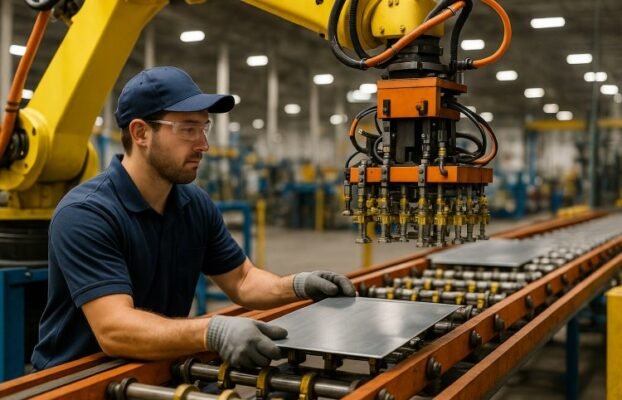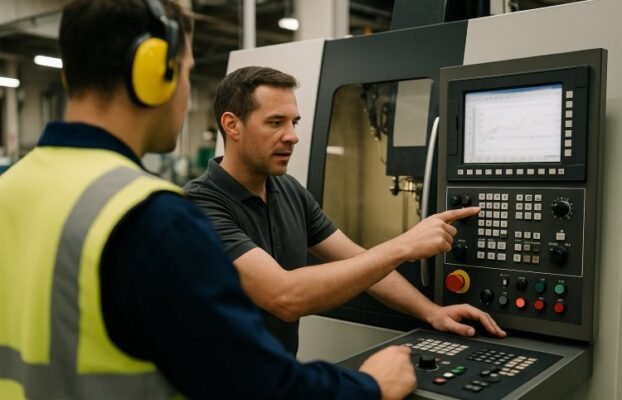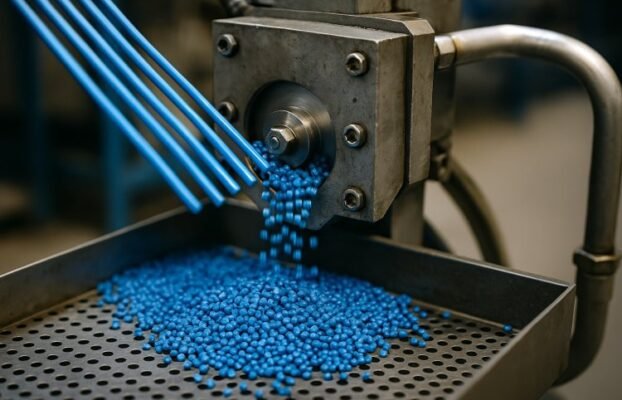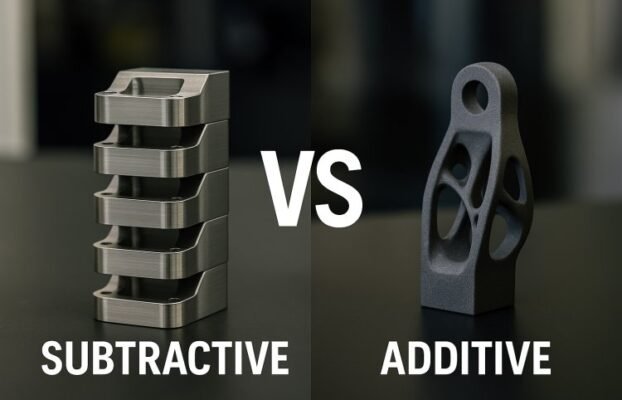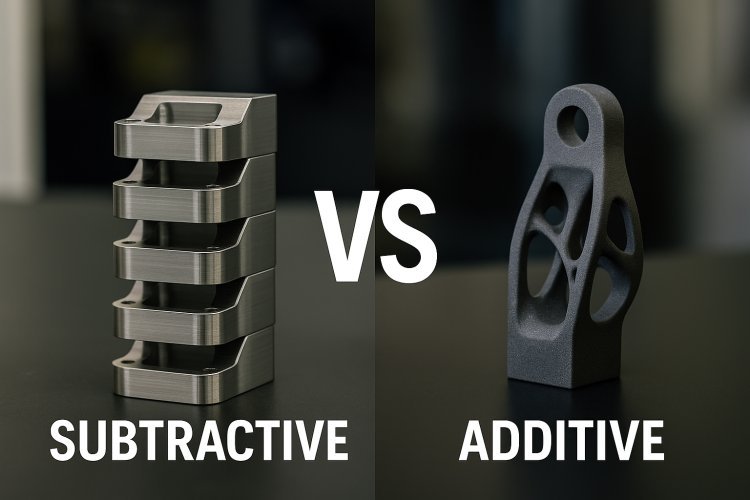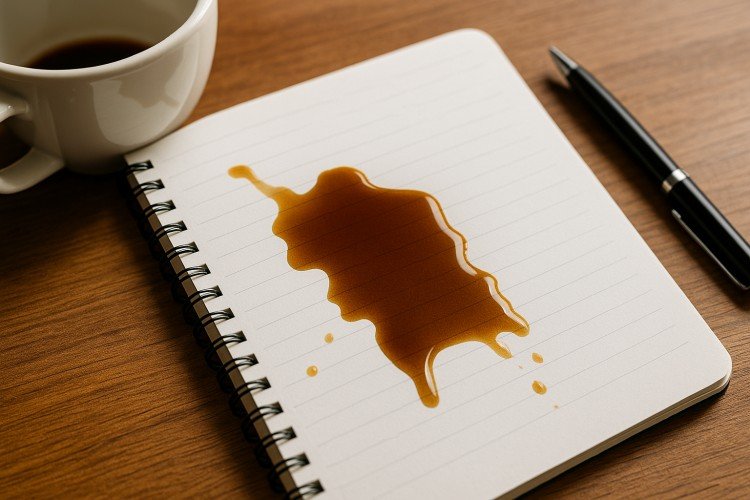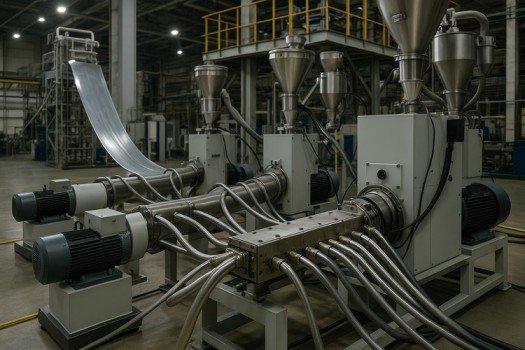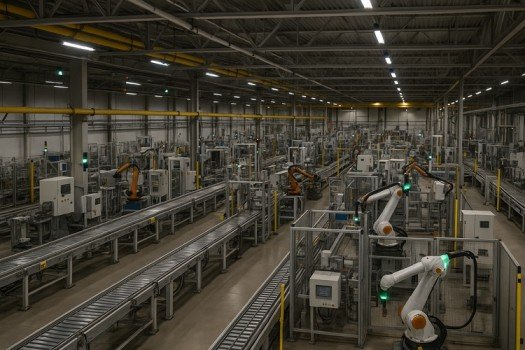What is a Paper Converting Machine?
A paper converting machine is an industrial piece of equipment used to cut, shape, print, and package paper and board products. These machines take large parent rolls or flat sheets of paper and convert them into finished goods of various sizes and forms.
Main Types of Paper Converting Machines
Paper converting machines are specialized and designed to perform specific tasks, ranging from basic cutting to intricate packaging. Understanding the differences between them is crucial for anyone in the industry or considering a new investment.
1. Slitter Rewinders & Sheeters
These are the foundational machines in paper converting, responsible for altering the size of paper rolls.
- Slitter Rewinders: These machines, also known as roll slitters, take a very wide, large “jumbo roll” or “master roll” of paper and slit it into multiple smaller, narrower rolls. The process involves unwinding the master roll, passing the paper through a series of sharp blades (either razor, shear, or score), and then rewinding the newly-cut strips onto new cores.
- Main Function: To reduce the width of paper rolls while maintaining a consistent tension and quality.
- Common Applications: Producing thermal paper rolls for cash registers, small paper rolls for fax machines, or rolls for medical charts.
- Sheeters: Unlike slitters, sheeters convert paper from a roll into a flat sheet. Sheeter machines are designed for precision and can produce sheets of various sizes with perfectly straight edges.
- Main Function: To cut rolls of paper into a predetermined sheet size.
- Common Applications: Manufacturing standard-sized office paper (A4, A3, Letter, Legal), cardboard for packaging, or sheets for printing and graphic arts.

2. Paper Bag & Pouch Making Machines
This category of converting machines is vital for the packaging and retail sectors, especially with the growing shift towards sustainable paper products.
- V-Bottom Paper Bag Machines: These machines create simple paper bags with a “V” or pointed bottom. Paper Bag Machines are often used for light-duty bags for items like snacks, bread, or small retail goods. They are known for their high speed and efficiency.
- Square-Bottom Paper Bag Machines: Also called block-bottom bag machines, these produce bags with a flat, stable bottom. This design allows the bags to stand upright, making them ideal for grocery shopping, carrying heavier items, and for more aesthetically pleasing retail packaging. These machines can also integrate handle-making units to attach twisted or flat paper handles.
- Handle Making Machines: Some paper bag machines have an inline handle unit. These units take a roll of paper cord or a flat paper strip, cut it to the right length, and glue it to the bag as it is being formed.
3. Tissue Converting Machines
This equipment focuses on the production of a wide range of household and industrial hygiene products.
- Toilet Paper Rewinders: This is a complex machine that takes a jumbo roll of soft tissue paper, runs it through an embosser (to add texture and strength), perforates it (to create tear lines), and then rewinds it onto cardboard cores to create the final toilet paper logs. The logs are then cut into individual rolls by a log saw.
- Facial Tissue Machines: These machines are designed to fold tissue paper into interlocked sheets (so that when one is pulled, the next one pops up) and stack them into a block. The stacked tissues are then fed into a separate boxing or packaging machine.
- Napkin and Handkerchief Machines: These machines are similar to facial tissue machines but are designed to fold and count napkins or smaller handkerchiefs for packaging. They often include an embossing unit to add decorative patterns.
4. Printing & Finishing Machines
These machines add value and functionality to converted paper products. Printing & Finishing Machines are often used after the cutting and shaping process.
- Flexographic (Flexo) Printing Machines: This type of press uses flexible printing plates and a fast-drying ink. It is widely used for printing on large rolls of paper and is essential for adding branding, logos, and colorful designs to paper bags, packaging, and other converted products before they are cut or shaped.
- Die Cutting Machines: These machines use a custom-made steel rule die to cut paper or cardboard into precise, non-standard shapes. They are indispensable for creating custom packaging boxes, envelopes with unique windows, or promotional items.
- Laminating and Coating Machines: These devices apply a thin film or a liquid coating to the surface of the paper. This process can add a glossy or matte finish, increase durability, and provide a protective barrier against moisture or grease, which is critical for food packaging.
- Embossing Machines: These machines press a design or pattern into the paper to create a raised, three-dimensional effect. Embossing adds a premium feel and visual texture to products, and is commonly used on napkins, greeting cards, and specialty packaging.

Key Applications of Paper Converting Machines
Paper converting machines are not just for one specific industry; they are the workhorses of a vast ecosystem of manufacturing, serving diverse sectors that rely on paper and board products. The versatility and efficiency of this equipment allow it to meet the high-volume demands of modern consumer markets. From essential household goods to sophisticated packaging, the final products of these machines touch nearly every part of our daily lives.
The applications can be broadly categorized into several major industries, each with its own set of needs and specialized machinery. These applications demonstrate how paper converting is a critical link in the supply chain, transforming raw materials into finished goods that are ready for distribution and sale.
Applications by Industry
| Industry | Key Applications | Specific Products & Examples |
|---|---|---|
| Packaging | Creating durable and customized packaging materials for shipping, retail, and food. | Corrugated boxes for shipping, paper bags for groceries and retail, folding cartons for consumer goods, and greaseproof paper for food service. |
| Hygiene & Personal Care | Converting large rolls of tissue and non-woven materials into sanitary and absorbent products. | Toilet paper rolls, paper towels, facial tissues, napkins, and disposable medical drapes. |
| Printing & Publishing | Preparing paper for printing presses and finishing printed materials into final products. | Standard-sized office paper (A4, Letter), books and notebooks, brochures, magazines, and envelopes. |
| Food & Beverage | Producing safe, food-grade packaging and serving materials. | Paper cups, paper plates, food wrapping paper, flour and sugar bags, and fast-food packaging containers. |
| Medical & Industrial | Creating specialized paper and non-woven products for medical and industrial use. | Sterilization wraps for medical instruments, disposable bedding, and protective sheets for industrial environments. |
| Stationery | Converting paper into everyday office and school supplies. | Notebooks, notepads, sketchbooks, and file folders. |
This table provides a clear overview of how various industries leverage paper converting technology. It shows the wide-ranging utility of these machines, solidifying their role as indispensable assets in the global manufacturing landscape.
Key Considerations When Choosing a Paper Converting Machine
Selecting the right paper converting equipment can significantly impact your business’s productivity and profitability. Here are some crucial points to consider:
- Product Type: First, determine what product you want to produce (bags, rolls, sheets, etc.).
- Production Capacity: Assess your production needs and choose a machine with a suitable capacity, whether you need a high-speed machine or one for a small business.
- Budget: The price of a paper converting machine varies widely. Purchasing used paper converting machines can be a cost-effective option.
- Support and Maintenance: Ensure the paper converting machine manufacturer provides reliable technical support and spare parts.
Conclusion
Paper converting machines are the driving force behind a large part of the manufacturing and packaging industries. By understanding their types and applications, you can make informed decisions to grow your business. This equipment not only increases efficiency but also contributes to environmental sustainability by producing versatile paper products.
When seeking the right partner for these complex systems, it’s essential to work with experts. Companies like Plentifulchoices stand out as premier solution providers in this field, offering top-of-the-line industrial machinery and comprehensive support.

